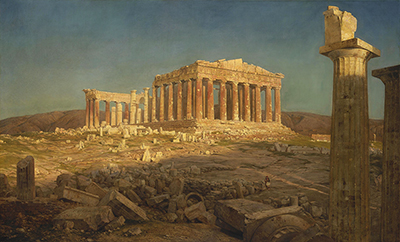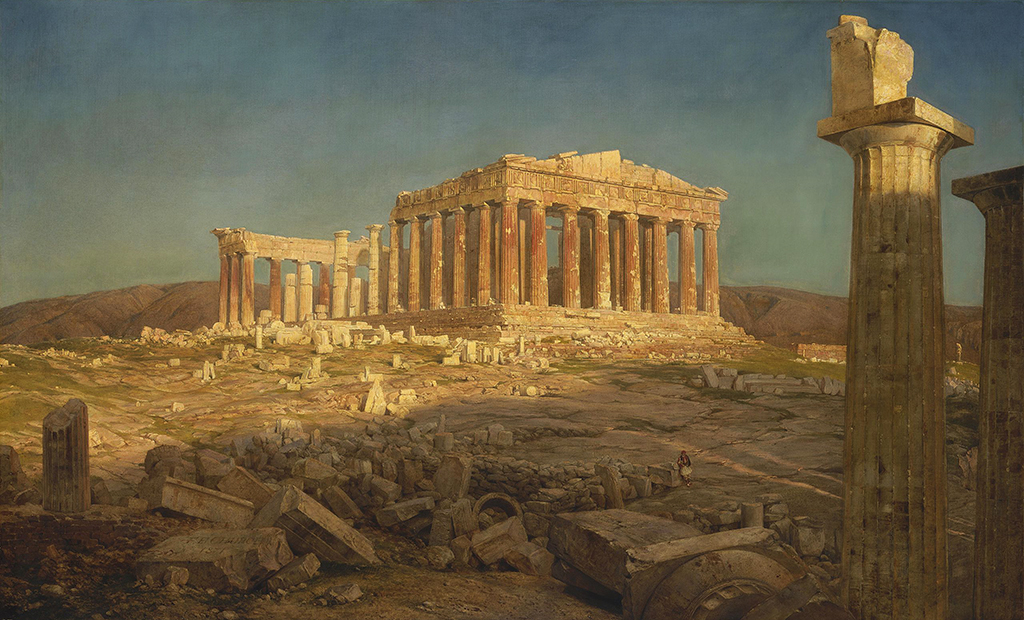 Buy Art Prints Now
Buy Art Prints Nowfrom Amazon
* As an Amazon Associate, and partner with Google Adsense and Ezoic, I earn from qualifying purchases.
Frederic Edwin Church's 1871 oil on canvas painting of the Parthenon in Athens borrows heavily from the late 19th century renewed interest in the Ancient Greek world and a renewed Hellenophilia that had taken root in both the Old World and the Americas.
His visit to Greece in 1869 resulted in a sojourn of several weeks in Athens, whereby he had sketched and studied the ruins of Classical Athens which became the basis for his future work such as The Parthenon. The Parthenon itself was severely damaged during a siege by means of a cache of ammunition ignited within by Venetian bombardment in 1687. The painting depicts the building in the background in its mostly ruined state, with its rear columns either left standing, half-destroyed, or adjacent to the building, toppled over from the explosion.
What is notable about this painting is its lack of detail common to many other depictions of the Parthenon. Lacking are the famed Elgin marbles, with their large, animated frieze metopes depictions of Lapiths battling Centaurs. Furthermore, the barren ruins of the Parthenon and its surrounding area lack depictions of Athenians going about their daily business. The building is shown in its state of ruin rather than as an idealised interpretation of Classical Athens.
The foreground is dominated by a shadow cast over an assortment of scattered ruins on the Acropolis. The darker tones used throughout contrast well with the earthy colours found in the sky and the Parthenon in the background. The brown hills found in the background accentuate the Attic countryside, whilst the earthy greens found on the Acropolis hint at the reclamation of nature over one of Western Civilisation’s most iconic landmarks.
When compared to other paintings of the Parthenon, of which there are many, Church opted to display the ruined, as-is edifice of his time rather than a glorified renewal or imaginative approach to how it may have looked in the 5th century BC. This latter style was very popular, particularly in America where renewed interest in the Ancient Greek world was becoming fashionable to many. Therefore, it may be alluding to a representation of the waxing and waning of the Classical world, thus giving it a more contemporary feel as opposed to a romantic idea of the past.
Church was commissioned by Morris K. Jesup, financier and philanthropist, in 1871. Although Church had drawn many sketches of the building, it was not until this time that he was able to complete what he referred to as his Big Parthenon. Its dimensions are 118 x 184.5 cm. It was first exhibited at Groupil's Gallery in New York City in 1872 to widespread acclaim. It also appeared at a number of expositions around the world, including at the Paris Exposition Universelle in 1878. It can be found today in the Metropolitan Museum of Art in New York City.




